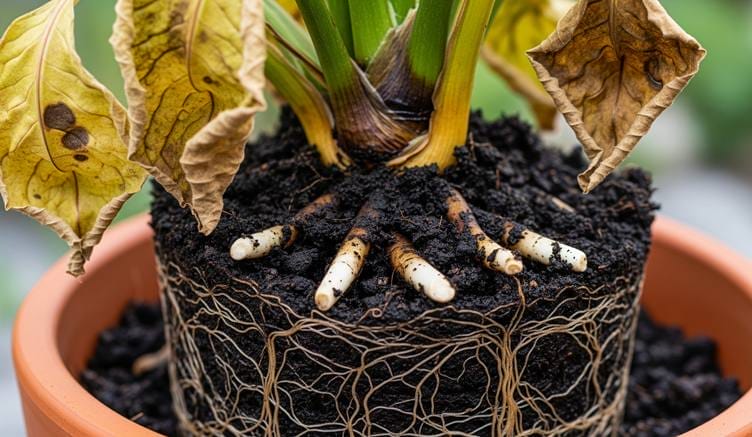
Causes and Treatment Methods of Root Rot in Plants
Root rot is a serious problem frequently encountered by plant growers. Root rot, often caused by overwatering and drainage problems, can lead to plant death if left untreated. Here are the causes, symptoms, and treatment methods for root rot.
Causes of Root Rot
Overwatering
The most common cause of root rot is overwatering. When plants receive too much water, their roots are deprived of oxygen, leading to root rot.
Poor Drainage
Poor soil drainage and a lack of drainage holes in the bottom of the pot also contribute to root rot.
Poor Air Circulation
A lack of ventilation and a crowded root structure can lead to root rot.
Symptoms of Root Rot
Leaf Yellowing
Root rot makes it difficult for the plant to absorb water and nutrients. In this case, the leaves begin to yellow.
Foul Soil Odor
Rotting roots emit a foul odor. A rotten smell in the soil is a sign of root rot.
Wilting Leaves
Due to unhealthy roots, the plant cannot absorb water, and the leaves take on a wilting appearance.
Treating Root Rot
Clean the Roots
Carefully remove the plant from its pot and trim off any rotting roots with sterile scissors. Leave the healthy, white roots and remove any rotting brown roots.
Change the Soil
Be sure to change the soil of your plant experiencing root rot. Make sure the new soil is well-drained.
Pot Selection
Use a pot with drainage holes. This allows excess water to drain out of the pot and prevents the roots from becoming waterlogged.
Change Your Watering Habits
Avoid overwatering your plant. Wait for the soil to dry before watering.
Find Us On Instagram















M. Pereira says: